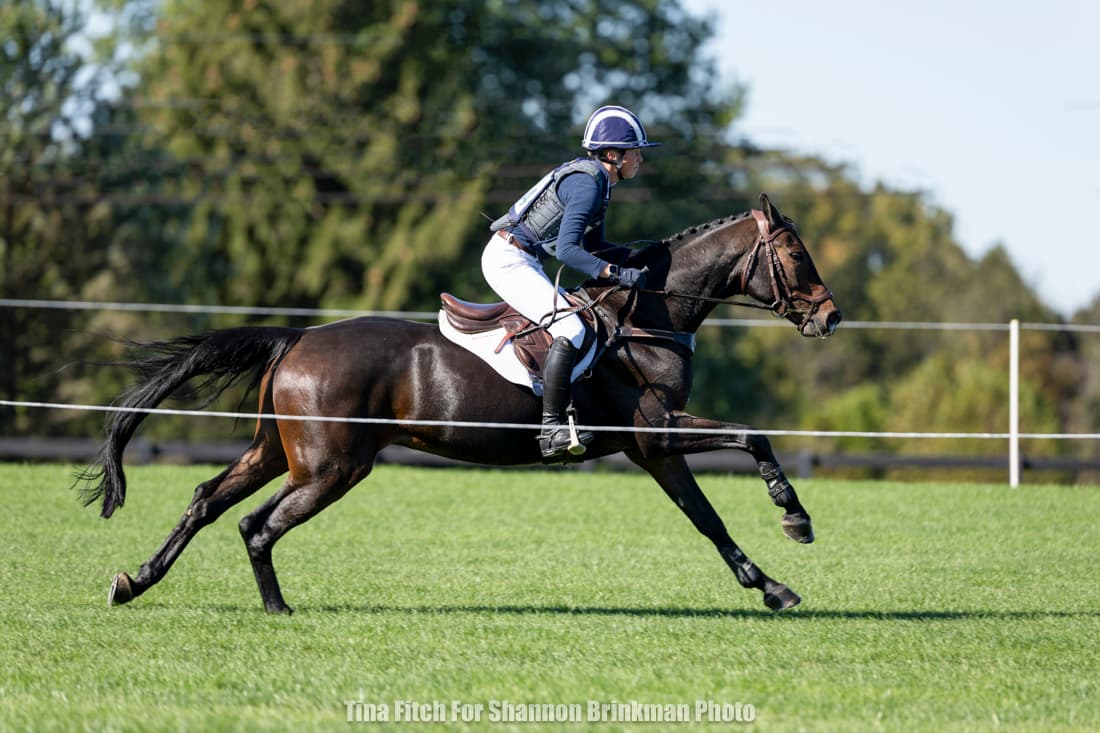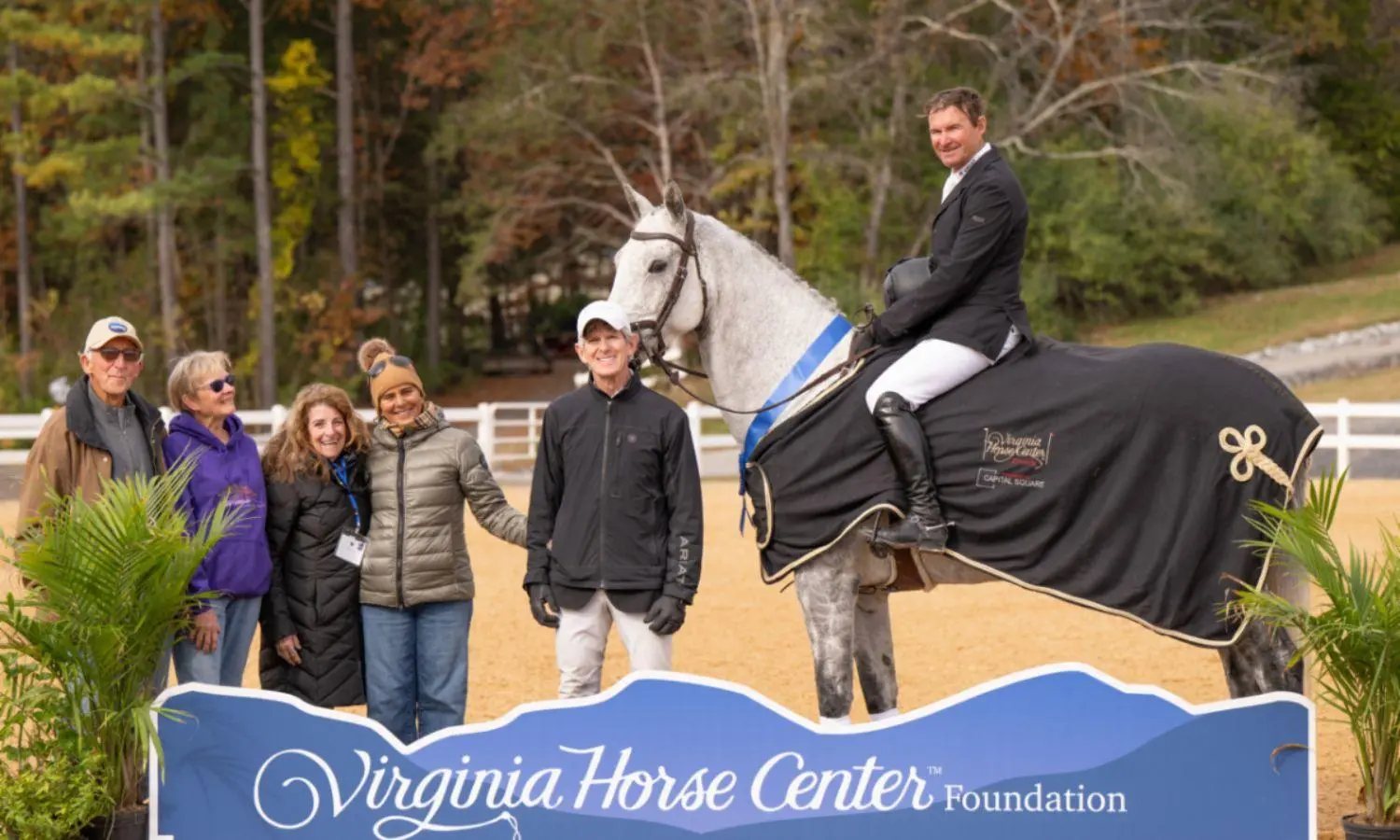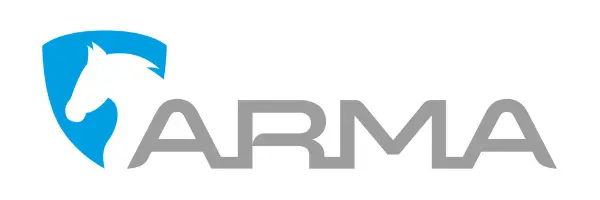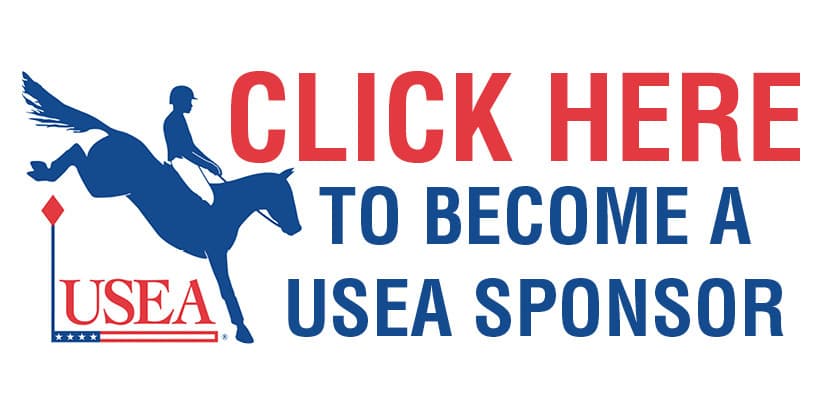Podcast: YEH and FEH Programs with Robin Walker, Samantha Allan and Debbie Adams
Robin Walker talks about the introduction of jumping to the Future Event Horse Program and Samantha Allan has information on the next Future Event Horse Clinic she will be judging with Robin in Area II. Plus Debbie Adams shares her views on the importance of the gallop in the Young Event Horse. Click here to listen on the web player, click here for the mp3, or listen on the podcast player below.
Chris: This is the United States Eventing Association's official podcast. Hello and welcome to the program. I'm Chris Stafford On this week's show, we're going to be focusing on the young event horse and future even horse programs. We're going to hear from Samantha Allan, who is one of the clinicians at an upcoming clinic.
Robin Walker's going to tell us about the introduction of jumping into the future event horse program. We're also going to hear from Debbie Adams. Debbie, of course, is a judge-trainer, as well as a competitor, herself. She has some good advice on what to look for and how to develop the gallop in the young horse.
Robin Walker joins us now. Robin, welcome back to the program.
Robin: Thank you for having me.
Chris: Of course, the young event horse program here at the USEA is something that you feel passionate about. What we'd like to talk about today, Robin, is the introduction of jumping to the program. That is something that you've felt very passionate about, isn't it? Bringing this in and why it's important to have it in the program.
Robin: It was something, when Susan asked me in the beginning, would I be involved on the committee, the FEH side of things, obviously when you're at YEH the horses are already in tack and jumping. From the FEH side of things, that was something that I wanted to get involved in right away. However, it became pretty clear that the program, the FEH side of things needed to get deeper and a bit more structured and a few more legs on it before we went down that road. It's been under discussion on the committee level for a while now. This year felt like it was the year that we should make that step and start to go down that road.
Chris: For those that are not party to those committee conversations, Robin, explain why you felt it was important and the journey for this to be included in the program over here.
Robin: My personal feelings on it were I would never buy a three year old that I didn't see jump. There is a school of thought that says, "Well, just because it jumps on the loose, you know, is not proof that it's going to jump under tack." There's some validity to that [in some scenarios 00:02:43]. When we were traveling through Ireland and buying the three year olds, you get to see them move. You get to see how coordinated they are. You get to see how much scope they have. You get to see the whole picture, or more of the picture, or as much of the picture as you really can see.
When you start to think about putting that in a …. I'm used to seeing it in a much older format. It's been around a long time. People know what they're doing. When you start producing your own horses at home, like we've done and you start to realize that young horses and the way they can react in certain situations is not always predictable, you see. It's the most diplomatic way of describing that I think.
Once you decide you're going to try and put this into a more structured program, but also into something that you're going to have a standard for and award marks for, and judge, that takes quite a bit of thought, and a lot of effort, and loads of consideration in terms of did the safety side of things. How are you going to structure it? What's going to be acceptable? How are you going to educate people into getting their horses ready? What are they going to expect from the day?
As you can imagine, that process doesn’t occur; it may occur in your own head in a few minutes, but it doesn't occur. When you start to think of all the ramifications, it doesn't occur overnight. That's all the things that have basically been discussed behind the scenes going into this, going forward.
Chris: This is something that was agreed upon for the East Coast, to start over on the East Coast. Is that correct, Robin?
Robin: Correct, correct. East Coast, we're going to do it this year. It'll be at Loch Moy on October 8th. That will be our East Coast finals. The jumping pen will be used. It's already been used and tested at the symposium down in Florida in the winter; worked very well. It's going to work very well. Obviously, some hitches here and there that we'll work out.
That's where we'll work everything out. We'll make a proper attempt to transfer that so both coasts are equal. For now, we've got enough on our plate to stay on the East Coast and make sure we get the bugs worked out of the system before we move on.
Chris: Given your European background and view on the development of the young event horses, Robin, explain to everyone why you feel it's important to view these horses including the jumping component; why that is critical to the development of the young event horse.
Robin: You fall back on your own experience I think. When you're looking at horses and you're looking to buy them, or you're looking to your own horses that you bred, as we've bred a few here now, you want to see what they're turning out like. It's very simple. It starts very simple.
Maybe in the fall of the second year, we would just give them a spin down a chute and see how coordinated they were, how naturally balanced they were, how good they are with their feet, and how much raw jump they've got. They wouldn't do a whole lot. Once they're turning three and starting to get started under tack, and lunge-lining, and driving, you basically need to see what you've got. Some, it's clear from the first couple of times that you're not going to really need to do a whole lot with them because they're natural at it.
Some, it's clear that they're not natural at all. Some, they're not very good from the breeder's perspective. It's probably a good idea to be finding that out within reason, as early as you can. It's just something that we're used to doing. Certainly, if you have something that goes down the chute and it's scopey and balanced, and naturally balanced through the air, and makes a nice shape, great with its feet, good concentration, and does that naturally, then you're going to leave that alone. You're not going to ask too many questions until it's under tack and going.
I think it's as much a weeding out process certainly for me here with the young ones that we've bred. I've made a few mistakes already. When you're starting out what that costs as four year olds taking them around the place and you [inaudible 00:07:52] they turn out to not be very good, then from that side of it, then we probably should have done a bit more with them. It's a window in to see what you've got.
When you start to think about including it in a competition, then there's a marketplace for a breeder who has got something to sell and a track star to attract the interest of some of the riders over here. That's a huge part. Two thirds of what we do is jumping-based and canter-based. It's just a natural and a logical development.
Chris: Of course, with this program, as you say it takes a while to roll out a program when you're including a new element to it. Give us an idea of what that has looked like then. As you say, you tested it in Ocala. It will be used in the finals in October. What should people get to know about it, Robin?
Robin: Start from that. We have to start from the beginning. The first discussion was the height of the pen we were going to use. I modeled that. We modeled that on the one at Spy Coast Farm, which I know the young horse manager there very well. He's massive experience. The pen we use is seven feet. It's seven feet for a reason.
We all agreed that we'd had horses challenge six feet. Obviously, you don't want somebody else's horse that simply comes into a situation it maybe is not familiar with, with an atmosphere and decides it's leaving. We all agreed that that was one of the most critical things, to get that bit right. That worked really well in Ocala.
It was clear that the young horses …. We had a more experienced horse, we had a less experienced horse, and then I brought one of my real young ones that had never been anywhere just to see what would happen. That worked nicely. Then Samantha Allan and I laid out the structure of the chute as it will be both in the education part of it in July that we're going to do at Loch Moy and also on the test on the practice day before the finals.
We laid that out on the ground and went through it with the distances. We've established the heights of the fences and the maximum height of the oxer at the end. Then we did a demonstration with each horse and enjoying this whole process of sorting all this out with parameters on what we're going to allow, and what we're not going to allow.
For instance, if we get a big rangy, scopey horse come in, we're going to be made to change the distances. People will be allowed to do that. That'll be within reason, obviously. If somebody comes in with a horse that's completely overwhelmed and they don’t feel like putting that three year old in on the judging day, then that's fine. They don't need to do that. It won't be a, "You have to do this" type of deal. You'll still only be able to do the in-hand if you're not comfortable with the jumping. It's as much an educational starting point as it is a competition in itself.
To that end, in July, on the 16th, we'll be doing, at Loch Moy, we'll be doing a video. That'll be an educational video. People can find all the information, the flyer's out, by logging on to the USEA Web site, or Loch Moy and go digging after that information. It's all being developed right now. That'll all be put out there so that people know what to expect and how to get their horses ready.
My end game is that there is no surprises. When people turn up at the finals on the East Coast, they will have already seen what they're going to be presented with. They'll already know all the rules, all the information will be out there. They'll have had a chance to get their feet wet before they put their horses into that environment.
Chris: Understand the scoring, too, of course.
Robin: Correct, yeah, correct.
Chris: All right, Robin. It's obviously a big step forward in moving in the right direction there for the young event horse and the future event horse program. I want to thank you very much, of course, for your input and for coming on the program and sharing that with us.
Robin: You're welcome. Thank you very much for having me.
Chris: Samantha Allan joins me now to tell us about this upcoming future event horse clinic. Samantha, welcome to the program.
Samantha: Hello.
Chris: You're going to be presenting at this clinic. Tell us a little bit about it, where it's going to be held, and when, and the format for it.
Samantha: It's going to be held at Loch Moy Farm at Adamstown, Maryland on July 16th. The format is going to be similar to what we plan to do at championships. We're hoping to have the exact rings set up. It depends on the age of the horses that come in. We'll be starting them from ground poles and working their way up as their experience sees fit.
Chris: It's a day-long program. Which aspect of that will you be speaking to?
Samantha: Robin and I will be working together with the horses usually just making the decisions on what heights and what distances, guiding the owners and handlers. One of us will act as the whip person as well and just guiding them through how to introduce their horses to the chute. If they're more advanced, what kinds of exercises they can do to help their horses improve.
Chris: How many horses do you expect to be looking at?
Samantha: I'm not really sure yet. This is one of the first times we've done this and they've just put it out. We're waiting to see.
Chris: How can people find out about it and apply to take part in the clinic, Samantha?
Samantha: I believe there's a flyer up on the Maryland Horse Trials Web site. I believe it's also on the U.S. Eventing calendar site.
Chris: All right. I had Robin talk to us a little bit about introducing the jumping element to the program here. Tell us a little bit about your thoughts and philosophy about having that component as an important part of developing the young event horse and the future event horse.
Samantha: I think it's a very important part with the horses jumping. They can learn how to use their bodies without the interference of a rider. Good riders can help horses, but sometimes if you make a mistake, they can hold that against you. This teaches them to think a little more independently. They can make mistakes and come back from them more easily.
Chris: What sort of arrangement do have there for it? Do you know? Is it in an indoor arena or a pen?
Samantha: As of right now, as far as I know, it's going to be in the pen, probably not in the indoor; one of the outdoor rings. It's seven feet tall. The dimensions are approximately 150 by 70, give or take a little bit. You can see through it. Watching, you can see what's going on. This is the same arena we hope to be using for championships.
Chris: All right, terrific. Remind everybody again of the dates and the venue for this and where they can find more information, Samantha.
Samantha: It's at Loch Moy Farm in Adamstown, Maryland. It's on July 16th. There should be a flyer up on the U.S. Eventing Web site, as well as the Maryland Horse Trials Web site.
Chris: All right, wonderful. Thank you very much for telling us about this. We'll obviously encourage people to go to those Web sites to find out more information. Thank you very much indeed for your time.
Samantha: Thank you.
Chris: Sam will be judging the future event horse on both the east and west coast. She'll also be joined by Peter Gray on the East Coast, with Robin Walker. The USEA has also just announced that Judy Bradwell, Bea di Grazia and Cathy Tucker-Slaterbeck will be the judges for the Young Event Horse Championships.
Debbie Adams joins me now to talk about an article that she recently wrote on one of her favorite topics. Debbie, welcome back to the program.
Debbie: Thank you, Christine. I'm glad to be back.
Chris: It is one of your favorite topics, of course. You're passionate about so many aspects of the sport. The gallop and the purity of the gallop is all-important to the event horse, isn't it?
Debbie: It is. I think that people forget how important it is until it's not going well. To me, it's the four-phase. You dressage, you show jump, you cross country, and you gallop. I think you need to train the gallop.
Chris: What is it that you're looking for in that young event horse then to define the gallop and the quality of the gallop at that early stage of his life?
Debbie: If I was going to sum it up, to make it very concise, I would say elasticity, balance, rhythm, components of what I need in a horse that I think's going to move up to level. They need to learn how to maintain those qualities by carrying the weight of a rider.
Chris: Is this something that you can confirm when they're not ridden at that young age, or do you need them under tack to establish that?
Debbie: I really believe you have to put them under tack to establish anything, even in their jumping. Free jumping, their arc can be quite different alone versus carrying weight. When I shop for young horses, I always at least do a small gallop, even in an arena just to see their reaction to the leg. Not only if they move off the leg quickly, but how they do it. Do they flatten? Do they lengthen? Do they quicken? Are they willing to face the bridle?
Not that I expect them to do all those things, I just want to know what they have naturally, what it is they have to develop, and if that's going to be something that's difficult for them when they get to the upper levels. You can tell a lot in a large arena galloping.
Chris: Of course, we're assessing the young event horse here, Debbie. When you look at them, are you taking into account, in that assessment, their confirmation, their development at that stage, and their breeding?
Debbie: Absolutely. Everybody gets all excited because young race horses gallop. It's a very different gallop. That is just flat out speed. It's not worried about balance. It's not worried about adjustability. It's just the fastest. What we want for the event horses is can they adjust it? Can they change the balance? Can they change the length of step? Can they do that in an agreeable state of mind? It's something that you really do have to start working with them quite young so they just understand it.
Chris: Balance and rhythm, of course, are key. You mentioned the race horse there. Let's look at American Pharaoh, who won the Triple Crown at the weekend. That's a horse …
Debbie: Oh my God, he's beautiful.
Christ: That's a horse that, Debbie, that got into his rhythm right at the start of his race. He always does. He then gets into this beautiful shape and rhythm that never changes throughout. You're looking for that in the event horse before, during, and after a fence, too, aren't you? Are you able to establish that they have that quality of rhythm at a very young age?
Debbie: Like many things, it's always easy to see the ones that have it. It's harder to see the ones that are going to develop on what they were given. Watching that racehorse this weekend was just so exciting. If you didn't jump up and scream watching him. He, obviously, can just open up his step quite carefully, quite easily and he just covers the ground. Yeah, we'd all like to make him an event horse.
Chris: For sure. Let's look at the other points of your article then, Debbie. What would you like to draw peoples' attention to?
Debbie: I just think they need to get the horses out of the arena, ride them on uneven terrain so they use all their body parts. Anybody that schools horses know it's quite different out in the field and uneven. I like to put them where it's uneven so they have to adjust front legs, hind legs, neck, back, so that they get used to using all those parts without even thinking about, without being worried about going downhill or struggling coming uphill.
I don't like to see young horses get super fit. I don’t gallop them for fitness at an early stage. I do start a small gallop, lengthening, and shortening the canter. Show horse people would definitely think it's a serious gallop. The eventers don't. It would only be like novice training speed, but so that the horses learn it's just part of life; that they don't get excited when you pick up the pace, and that they still stay quite ridable.
Chris: When you mentioned they're going up and down undulating terrain and of course the value of fox hunting is all too critical. In the young event horse you see it in Europe a lot of course; they're going up and down that uneven terrain in very difficult footing in some cases, or very often in the depths of winter. Do you think that helps them establish the rhythm in their gallop and the quality of their gallop because they're balance is already established?
Debbie: My parallel would be like when we go to work out in the gym. We do different exercises to develop our body for some specific goal. I think taking horses out and hunting them or riding them in the open like I do with the little exercises up and down the hill and striding in and out of the woods just prepares them for their big goal. I don't think it's essential to hunt. Maybe I say that because we don't really have much hunting available in this country. I think we have to do it being a bit clever on our own. I'm sure hunting's wonderful.
Chris: What about getting the horse uphill in front? You don’t want them on their forehand, but the youngsters are going to be on their forehand and how that affects their gallop. Talk a little bit about that.
Debbie: Good point. It's really relative. A four or five year old is not going to be incredibly uphill. They're just going to be finding their feet. I'm doing one this morning. All I want him to do is lengthen and shorten his step facing the bridle and I will have to organize this horse. He's big. He's young. He hasn't been in the open for more than what, two, three months? Other than that he was started in the ring. It's all new to him. All I need to do is be able to change the balance.
If it's not tremendously up hill, or tremendous lengthening, it doesn't matter. That's just your starting point. It's like everything else we develop in the horses. You get a starting point and you work with it. This youngster will just, I would say, go from a normal ring canter all through the different gears up to a training level 450 and then back down.
He'll slow down for his turn. He'll do different paces going up a hill and down a hill and just little slopes almost like little slalom slopes. He'll go up and down and up and down so that he doesn't even think about it, that it doesn't distract him so that when I go to add the fences at that point, he won't be stiffening against the effort.
Chris: Talk a little bit about getting that young horse galloping. The first instance, Debbie, when you start them to gallop, what would you say to riders who maybe haven't had a lot of practice at this and want to make sure their horse is balanced and how much they want in their hand at that point, teaching the horse to correctly gallop?
Debbie: Of course, I would say if you're not familiar with galloping, then get somebody to help you that does our sport. It's worth having somebody just watch you, put you in a good position. You can do everything by the book that you're going to read, but if your position's off, or your stirrups are too long, or something, you're not going to be a benefit to that young horse.
You have to be able to stay out of their way. You have to have enough weight in your leg, have your upper body positioned and such that the horse doesn't think about you except for responding to the aids. The balance of the rider is crucial for young horses. I think it makes all the different in their confidence.
Chris: How long would you suggest they start with their galloping then, when you're teaching that horse? Very beginning, we're talking about the young event horse program here, preparing these horses. You just want to get them used to the idea of galloping. This is the next phase, as you call it. You want to do it correctly. How long would you gallop them for and how frequently?
Debbie: I'd put it in their workout. It's not really duration. Again, really fit young horses, you're opening up a can of worms you never wanted. I wouldn't do enough to say, "Oh, I'm conditioning a young horse." It's not like I'm going to go out and do [three threes 00:25:50] of gallop. What I'll do is this guy'll go out and do easy flatwork in the field so I know he's listening, just walk, trot, canter, and little simple leg yields.
I want him to face the bridle. I want to feel a little tug in both reins. I want his nose leading, his poll the highest point so that he's capable of using his body. I have a field which I would say is roughly four times the size of a show jump field, just for a measurement. I'll just lengthen down the long side, bring him back for the corner, lengthen the long side a couple times, then I'll try lengthening to easy turns.
I might only do that; it's going to be hot today. I'll probably do that maybe three or four times on each lead. If he's good at that, we'll walk in the shade for a little bit. Then I'll just try to lengthen slightly going uphill. He's going to probably lengthen, shorten today at the most eight times. Like I said, just no more than the length of four show jump fields. This is a horse getting ready to do his first novice in two weeks.
Chris: Coming to the end of that gallop, you see riders just drop the reins completely, let them crumple into a walk. You see them just amble into a trot. Talk a little bit about that because it's just as important as the gallop itself. Isn't it?
Debbie: Oh my goodness, absolutely and maybe even more so. That's where a lot of your injuries occur is not in the workout, but when you go to pull up and the horse is tired. Nobody's there to help him balance, but you're still on his back, affecting his balance, but then you give up your job.
I look at a horse's body like a coiled spring, or a slinky. To keep that slinky moving, you have to have it connected between both hands when you're playing with it in the yard. When you're on a horse; it's your leg and hand. When I slow them down, it's all connected. It's on contact. I push them together to slow down standing. I want the horse's back to be able to move and be free.
I usually do it on a curve so you don't get that lateral stiffening and bracing in the jaw, just a gentle curve, bigger than 20 meters so that the horse can bring his hind end up under him and then his back keeps moving. Then you don’t get that jarring weight on the forehand. Then you get the horse that learns to pull up facing the bridle.
Chris: That's great advice. I think, as you say, every bit as important as the gallop, itself, Debbie. Thank you very much indeed for coming on the program again this week and sharing your thoughts on the importance of the gallop.
Debbie: Thank you very much, Chris. I enjoyed that.
Chris: You can read Debbie's article on the Web site at useventing.com where you'll find more information about both the young event horse and future event horse programs. Until the next time, thank you for listening wherever you are in the world. Enjoy your eventing.














